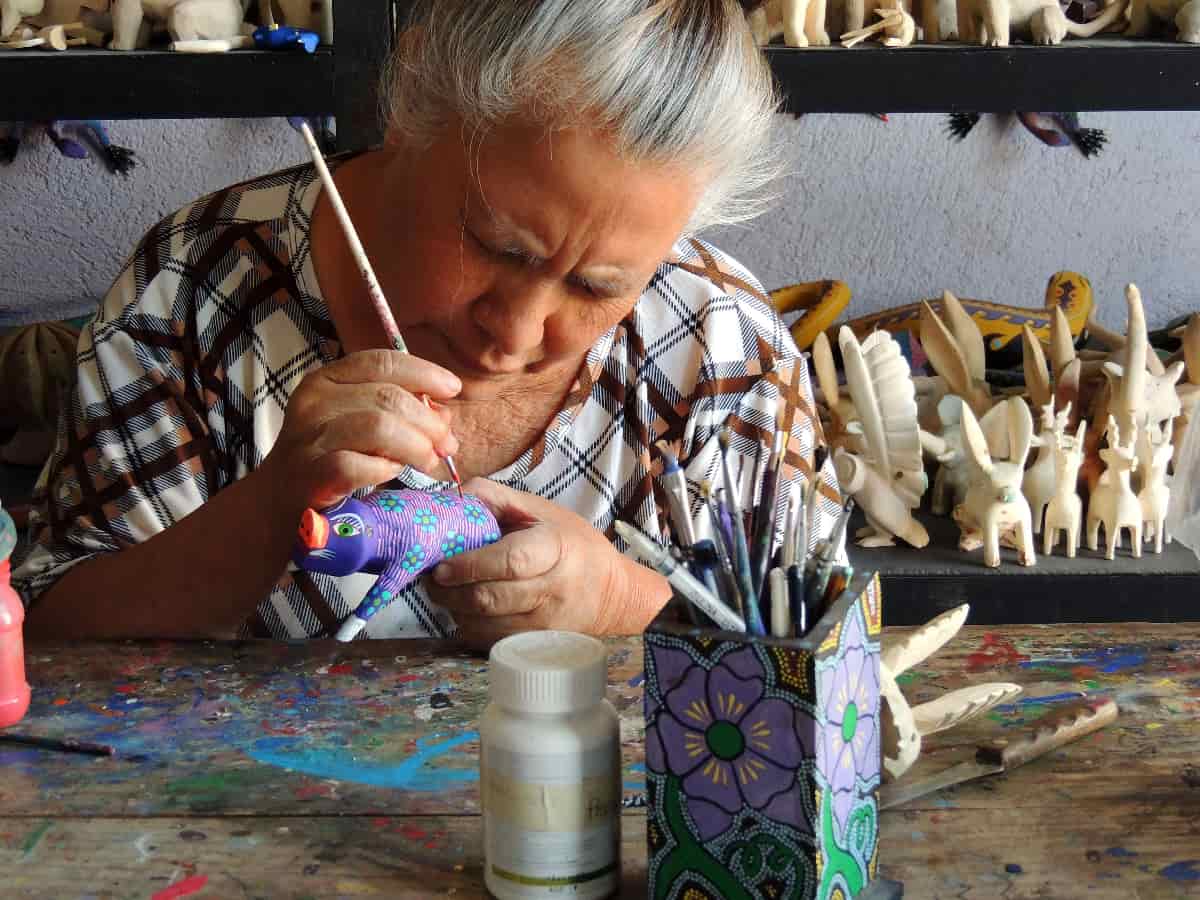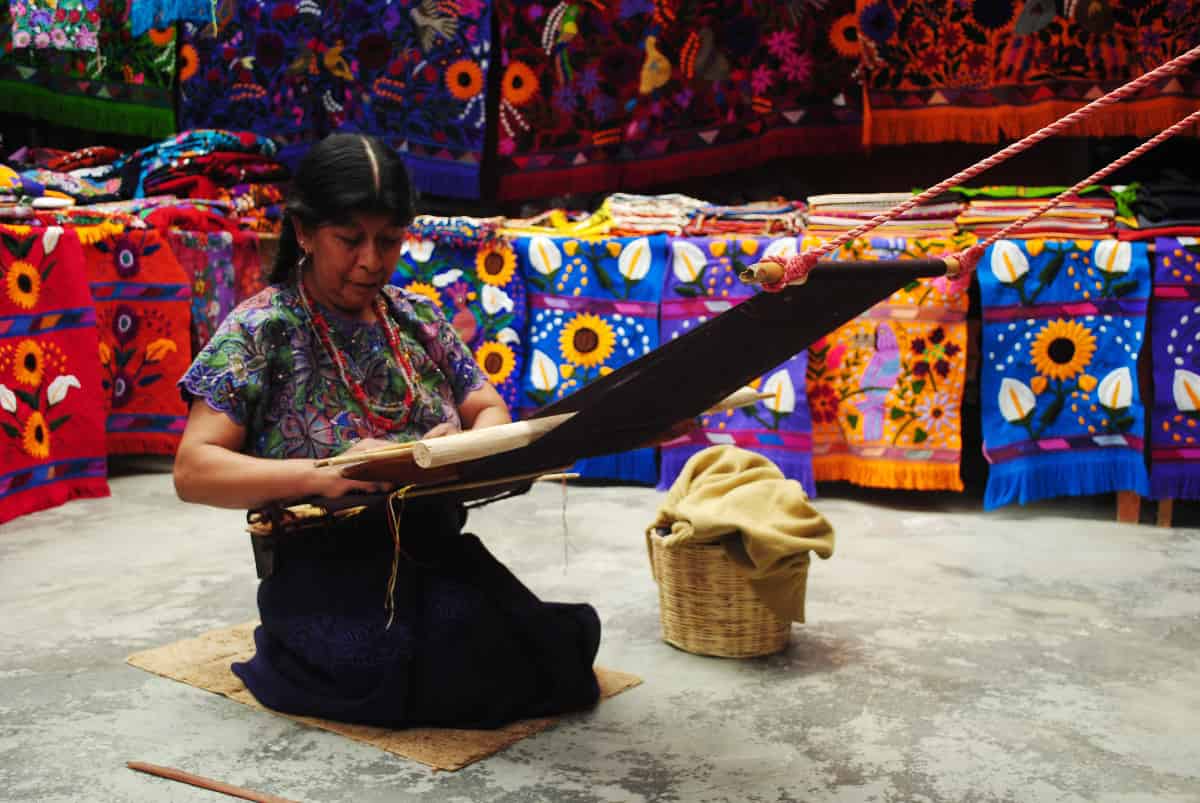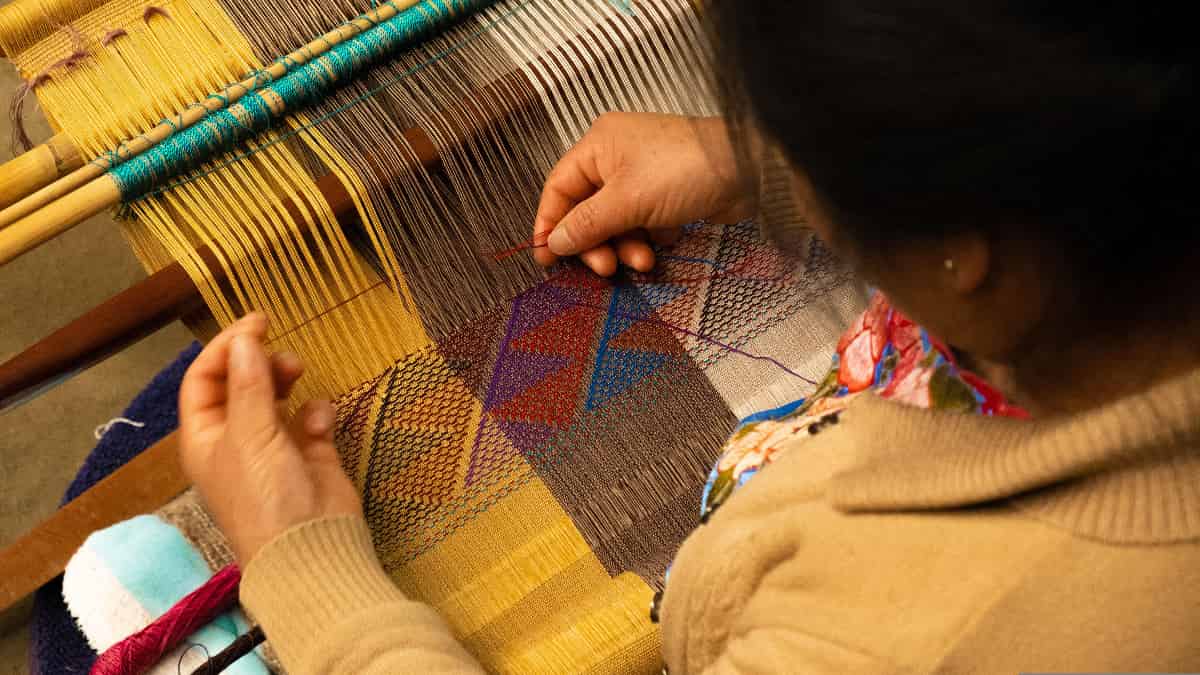How the conception of folk art varies over time
Folk art acquires a different definition according to the historical period and the region. The most common products made by artisans in Mexico are sarapes, embroidery, shawls, wooden masks, stone figures, and blown glass.

At the proposal of UNAM's Institute of Aesthetic Research (IIE), a multidisciplinary team of national and international experts is developing a glossary of terms related to popular art, which could be completed in 2023, announced Deborah Dorotinsky Alperstein, a member of that entity.
The goal of the project, explained the head of the Seminar "Folk art, handicrafts and typical industries; transits and transitions 1940-1980", based at that academic institution, is to define what folk art is since its conception has varied over time; it was not the same in 1920, 1950, or at the end of the last century.
The Chronological Glossary of Key Concepts of Folk Art in Mexico is a reference tool developed by the participants of the project "Crafts in Transition 1950-1970", funded by the Support Program for Research and Technological Innovation Projects of the General Directorate of Academic Staff Affairs of the UNAM.
This work proposes to closely observe the transformations of common concepts in the domain of popular arts, in the period from 1916 to 2010, paying attention to how they differ from the meaning they originally received during the early post-revolution, and the interventions of cultural agents such as Gerardo Murillo (Dr. Atl), Anita Brenner or Manuel Gamio.
Among those that have been worked on are "popular art", "crafts", "national art" and "typical industries", to name a few. The purpose is to allow an approach to these conceptual variations through time and the specialized bibliography on each topic, which was gathered, read, and discussed during the two years in which the seminar worked remotely, from March 2020 to date. Worked under the guidance of linguist Claudio Molina, it will be accessible digitally through the University Learning Network.
The first, added Deborah Dorotinsky, acquires a different definition depending on the historical period and the region; nor was it the same for anthropologists Alfonso Caso or Daniel Rubín de la Borbolla, as it was for Néstor García Canclini or Victoria Novelo, for example. In general, it has been defined as art produced by the people, but what we understand by this also changes over time; on numerous occasions, it refers to the poorest classes of society, to peasants or exclusively to indigenous people," said the cultural anthropologist from the University of California, Berkeley, and master and doctor in Art History from UNAM.

In the 1920s it became part of the definition of Mexican art; during the post-revolutionary period there was an important effort to build the nation and a thriving nationalism; cultural elements gave the Mexican nation its own identity, she recalled.
The material components that gave Mexico a unique imprint were pre-Hispanic, viceregal, modern (including the muralist movement), and popular art. "In particular, the native peoples have a gigantic ethnic richness, and an enormous diversity of material culture productions, some of them of a utilitarian and self-consumption nature, and others, commercial."
In addition, popular art became a "field of dispute" between groups of cultural agents: post-revolutionary artists, such as Roberto Montenegro, Doctor Atl, Diego Rivera, Frida Kahlo, and María Izquierdo, who collected it; anthropologists found in its study a productive space; and art historians, a discipline that was emerging in Mexico at that time.
Dorotinsky Alperstein has been dedicated to historicizing the changes in the concept, and from one year to date to a project supported by the Getty Foundation of the United States: the international comparative seminar on the changes in the concept of popular art in Latin America, particularly between Mexico, Argentina, and Colombia, where a team of professors and students from UNAM, the National University of Colombia, in Medellin, and the National University of San Martin, in Buenos Aires, are participating.
Its first face-to-face meeting was held from June 5 to 10, 2022 in that Colombian city, where the progress of the projects that the students have been working on since August 2021, when the inter-institutional meeting began at a distance, was reviewed. They discussed, in particular, the presence that popular culture has in current artistic production, especially in movements of resistance and social struggle. As a result of this project, a bilingual book will be published in 2023, with the works of the participants, students, and professors.

Art in evolution
Currently, in INEGI's Cultural Satellite Account of Mexico (CSCM), the production of handicrafts is classified into eight areas: pottery and ceramics; vegetable fibers and textiles; wood, woodwork and lacquer, musical instruments and toys; cardboard and paper, popular plastics, pottery, and pyrotechnics; metalwork, jewelry, and goldsmithing; lapidary, stonework and glass; saddlery and leatherwork; as well as food and typical sweets.
Among them, Dorotinsky Alperstein considered that the main handicraft activities in the country continue to be the production of textiles, ceramics, and, of course, goldsmithing, which is located between sumptuary art and handicrafts.
According to the CSCM, the culture sector generated 724,453 million current pesos in 2019, of which handicrafts contributed 138,291 million pesos; that is, 19.1 percent of the sector. That same year, spending on those products by households amounted to 135 thousand 453 million current pesos, equivalent to 18.7 percent of the total in cultural goods and services. In addition, they generated 489,890 paid jobs; that is, 35.1 percent of the jobs in the culture sector as a whole.
The university expert clarified, that the pandemic was onerous for creators, who today make a great effort to maintain craft traditions and turn them around.
"It is ridiculous to think that handicraft production is the same since the pre-Hispanic era"; its creation changes in history with the introduction of new materials, for example. With the depletion of certain natural products, such as lichens that were used for textile dyeing, anilines have been introduced; another example is the overexploitation of amate trees in the Otomí region, which puts the source of the bark used to generate that paper in danger of extinction.
Among the Nahua peoples of the Balsas River, who dedicate themselves to painting on amate paper, there has been a turn: the return of imagery to ceramic vessels, like those made in the 1930s, but with an interesting change in the narratives and iconography itself, said Deborah Dorotinsky.
"We would have to incorporate industrial designers to do workshops together with the artisans and help them have other design tools, improve their products and find them a better market. There should even be marketing advice for them to sell their products directly to the public. Many have already begun to take advantage of the space of social networks and give an outlet for their production in ways that one would not expect". In this way, they solve the big problem of intermediaries.

An artisan is an artist
The post-revolutionary governments, said the university professor, were intelligent in their political and cultural propaganda strategies; what was elaborated throughout the 20th century was a plan of promotion and cultural diplomacy, in which pre-Hispanic, colonial, modern, and popular art participated.
In this way, he said, Mexico became visible on the international scene and continues to be so today. The presence in the market, with collector's and consumer objects, is especially attractive for foreign and local tourism.
Sarapes, burnished clay, embroidery, shawls, wooden masks, shaped lacquer, hammered copper, baskets of otate and reed, stone, clay and plaster figures, woven wool, huipiles, tin figures, shell jewelry, blown glass, and piñatas, among others, are part of the Mexican creations, unique objects resulting from the thoughts and feelings of its creator at the time of making them.
An artisan is an artist. Both, "are cultural producers who participate in their respective markets (art and crafts), and produce products in which an artistic tradition that is transmitted in academies, in one case, and the family environment or a workshop, in the other, is involved".
The former combine symbolic elements of their cultural baggage to express themselves; in some cases, they are personal manifestations, perhaps subjective and emotional. They are true artists, and that should no longer be a motive for discussion, concluded Deborah Dorotinsky.




